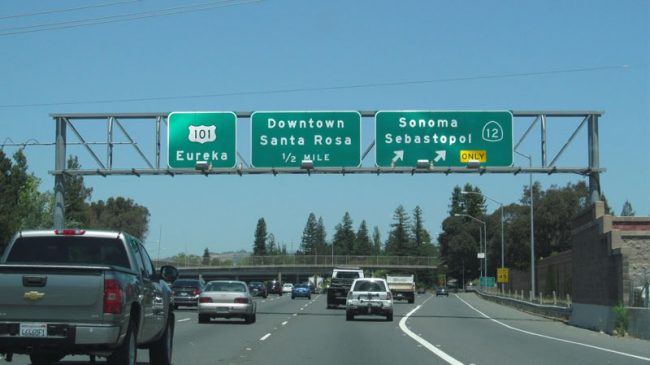California’s state highway system ranks 42nd in the nation, according to Reason Foundation’s most recent Annual Highway Report, which measures road conditions and cost-effectiveness. That ranking wouldn’t normally be something to cheer, but California has made some gains relative to other states, helping it climb in the overall rankings from 46th to 45th to 42nd in the most recent reports.
The Annual Highway Report ranks all 50 states in categories such as interstate pavement condition, traffic condition, deficient bridges, traffic fatalities and spending per mile of state-controlled road. The report is based on spending and performance data that state highway agencies submit to the federal government.
The good news is that California reported the lowest percentage of deficient bridges of any state in the nation. It also had the 10th-lowest fatality rate on its state highways.
But there’s also plenty of bad news in the report. As anyone who drives in Southern California can attest, traffic congestion continues to cripple the state. California ranked 48th in urban congestion. Only New York and New Jersey have worse statewide urban congestion rankings.
California is one of eight states where drivers now experience at least 50 hours of delay annually per auto commuter. New Jersey, New York, Virginia, Maryland, Massachusetts, Illinois and Washington are the others.
And as your car’s maintenance records may confirm, the pavement condition on California’s interstate highways is also poor. From 2012 to 2013, California and Arkansas made the biggest improvements to their urban interstates. Unfortunately, years of diverting transportation funding to other uses and delaying required maintenance has created pavement problems that aren’t easily fixed.
Even after recent improvements, the state’s urban interstate pavement condition still ranks 48th out of 50, and its rural interstate pavement ranks only slightly better, in 45th. Half of the nation’s rural interstate mileage in poor condition is located in just five states: California, Alaska, Colorado, Washington and Indiana. Similarly, almost half of the country’s urban interstate mileage in poor condition is in five states: California, New York, Texas, Michigan and Louisiana. Notice that California is the only state on both of those lists. It’s paying the price for kicking the can down the road on these highway preservation projects and is struggling to catch up in both urban and rural areas.
The state’s low rankings on pavement condition show how far it still has to go, and they’re also a vivid reminder that if you don’t fix roads now, you’ll have to pay even more to fix them later. Skipping routine maintenance can take years off a road’s lifespan and dramatically increase costs, as minor upkeep turns into rehabilitation, which turns into major reconstruction.
Given the amount of money California spends, it’s not unreasonable to expect better pavement condition on state roads. California spent over $400,000 for every mile of state-controlled road it has. Of that money, about $64,000 per mile went toward maintenance in 2013.
One way to improve pavement conditions might be to reduce the state’s administrative costs. For every mile of road it controls, California spends $47,000 on administrative costs. Only three states spend more on office costs, which often represent money that could be better spent filling potholes and smoothing pavement.
Gov. Jerry Brown and the Legislature continue to debate how to improve the state’s long-term transportation funding, and the state is now testing a mileage fee aimed at someday replacing the gas tax.
While those solutions aren’t imminent, California should have more certainty in its transportation planning now. After a decade of failing to pass a long-term surface transportation bill, Congress finally passed a five-year bill last December.
Now the state needs to prioritize the maintenance and repairs it has been putting off for far too long.
Adrian Moore is vice president of research at Reason Foundation, which publishes the Annual Highway Report.

